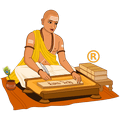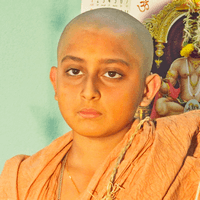
























Upanayana is one of the important Sanskara out of 16 important Sanskara mentioned in Hindu scriptures. Wearing of the sacred thread is the main ritual of Upanayana Sanskara. Upanayana is also known as Yagyopaveeta, Vratabandha, Maujubandhana and Janeyu. When the sacred thread is worn by Brahmins it is known as Rashna-Bandha, by Kshatriyas as Dhanurjya-Bandhan and by Vaishyas as Morvi-Bandhan. After marriage Sanskara, Upanayana is the most discussed Samskara in Muhurta treatises which indicates the importance given to it by our sages.

Notes: All timings are represented in 24-hour notation in local time of Monywa, Myanmar with DST adjustment (if applicable).
Hours which are past midnight are suffixed with next day date. In Panchang day starts and ends with sunrise.
All time intervals are categorized into three
Time: Counting the age from birth or from conception, the age prescribed is 5th or 8th year for Brahmins, 6th or 11th year for Kshatriyas and 8th or 12th year for Vaishyas. The maximum age limit is 16 years for Brahmins, 22 years for Kshatriyas and 24 years for Vaishyas.
Solar Month: All solar months during Uttarayana i.e. Makara (10), Kumbha (11), Meena (12), Chaitra (1), Vrishabha (2) and Mithuna (3) after avoiding Harishayana (i.e. the period from Ashadha, Shukla Ekadashi to Kartika, Shukla Ekadashi) are considered good.
Nakshatra: All fixed Nakshatra i.e. Rohini (4), Uttara Phalguni (12), Uttara Ashadha (21), Uttara Bhadrapada (26), all movable Nakshatra i.e. Swati (15), Punarvasu (7), Shravana (22), Dhanishtha (23), Shatabhisha (24), all gentle and friendly Nakshatra i.e. Mrigashira (5), Revati (27), Chitra (14), Anuradha (17) and all short Nakshatra i.e. Hasta (13), Ashwini (1), Pushya (8) are considered auspicious for Upanayana. As per Muhurta Chintamani, Ashlesha (9), Mula (19), Ardra (6), Purva Phalguni (11), Purva Ashadha (20) and Purva Bhadrapada (25) are also auspicious for Upanayana.
These Nakshatras are further grouped according to Rigveda, Yajurveda, Samaveda and Atharvaveda which are four important Shakha i.e. Veda branches followed by seekers of Vedic knowledge.
Days: All weekdays except Tuesday and Saturday are considered auspicious for Upanayana.
Tithi: Dwitiya (2), Tritiya (3), Panchami (5), Dashami (10), Ekadashi (11), Dwadashi (12) Tithi during Shukla Paksha i.e. bright half period of lunar month and Dwitiya (17), Tritiya (18), Panchami (20) Tithi during Krishna Paksha i.e. dark half period of lunar month are considered auspicious for Upanayana.
Dinamana: If the time between Sunrise to Sunset is divided into 3 equal parts, then Upanayana is considered auspicious in first part of the day, medium in middle part of the day and inauspicious during the third part of the day. For Upanayana only daytime is considered.
Kundali: When it comes to Lagna Shuddhi, things become little difficult. One has to find least malefic Lagna while choosing auspicious time for Upanayana. Following Kundali combinations are considered inauspicious and should not prevail during Upanayana Sanskara.
In general, benefic(s) in Kendra & Trikona and malefic(s) in 3, 6, 11 Houses are considered good.
Navamsha: Upanayana Lagna and Chandra should be in the Navamsha of Budha, Brihaspati or Shukra. Chandra in its own Navamsha is not considered auspicious except when it is placed in the 4th quarter of Shravana or in the 4th quarter of Punarvasu Nakshatra. The 4th quarter each of Shravana and Punarvasu are held among the best and auspicious by most exponents on Muhurta. In both cases the Chandra would be in her own Navamsha and 4th quarter of Punarvasu, she would be in her own Rashi also.
Tri-Bala Shuddhi: Transit strength of Surya, Chandra and Brihaspati should be considered. From Natal Chandra, all 3 luminaries i.e. Surya, Chandra and Brihaspati, when transit through 4, 8, 12 Houses are considered inauspicious.
Varnesha: Brihaspati and Shukra for Brahmins, Mangala and Surya for Kshatriyas, Chandra for Vaishyas, Budha for Shudras, Shani for Chandala - are Varnesha for different Varna i.e. caste followed in Hinduism.
Shakhesha: Brihaspati for Rigveda, Shukra for Yajurveda, Mangala for Samaveda, Budha for Atharvaveda - are Shakhesha for different branches of Veda learning.
Varnesha & Shakhesha: The weekday and Lagna of Varnesha and Shakhesha are considered auspicious during Upanayana. Varnesha, Shakhesha, Brihaspati and Shukra should be strong during Upanayana and should not be afflicted. Affliction of any of them will destroy the purpose of Upanayana completely. Graha, when residing in enemy house or debilitated or combusted or defeated in Graha Yuddha becomes afflicted and should be left during Upanayana.
Prohibited:
General: